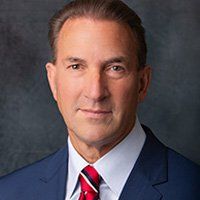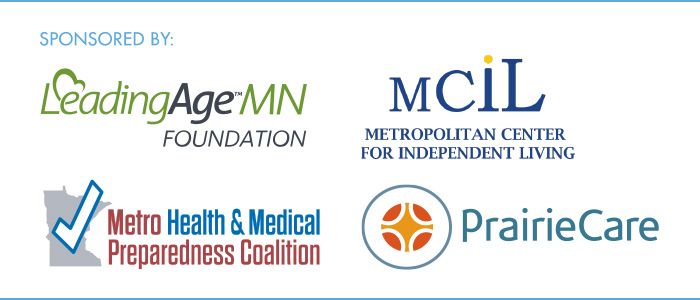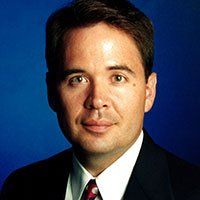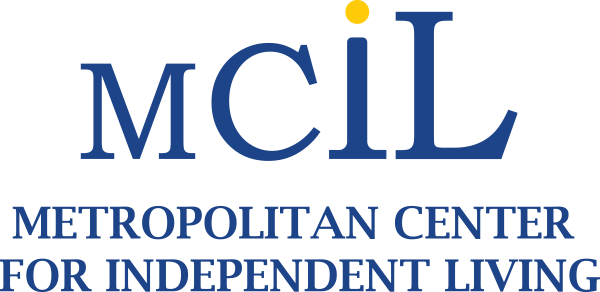Minnesota health care roundtable
Care Transitions: Improving the safety net
The following report from the 55th session of the Minnesota Health Care Roundtable continued on the theme of our last two programs, which focused on improving the interoperability of care teams and care transitions. In this session, we focused specifically on care coordination, completing exploration into a highly interrelated trilogy of emerging and related responses to the necessary evolution of health care policy. The role of care coordination is growing quickly across all phases of health care delivery. Data clearly shows it saves money, improves outcomes and increases patient engagement. Our panel brings diverse perspectives on how care coordination may be used. We extend our special thanks to the participants and sponsors for their commitments of time and expertise in bringing you this report. In the spring we will publish the 56th session of the Minnesota Health Care Roundtable, which will address the fundamental causes of the health care workforce shortage crisis along with potential solutions to these problems. As always, we welcome comments and suggestions.
How does your organization define the term care coordination?
Bonnie: Health Care Homes (HCH) defines care coordination as a team approach that engages the patient, personal clinician, and other members of the health care home team to improve the patient’s wellbeing by organizing timely access to necessary care and resources in a way that builds trust and ensures continuity of care. In primary care, care coordination needs vary among populations and individuals receiving care at the clinic. Some care coordination is provided to the clinic’s entire attributed population with services such as appointment reminders, notification of gaps in care, transition of care support, or medication management. For emerging risk, high-risk and high-cost individual patients, one-on-one contact (intensive care coordination) with a designated care coordinator provides support through “between visit” tracking, appointment follow-up, education, and coaching. This additional support to patients and families allows for an enhanced understanding of personal care needs and more effective care management.
TODD: Care coordination has a beginning, but no end. It encompasses all aspects of appropriate care—ranging from triage and pre-assessment to treatment planning and discharge planning. Beyond a single episode of care, care coordination needs to be a dedicated function within a care system. In mental health care, the team is often broadened to county caseworkers, social workers and school staff for younger patients. Care coordination is a core part of the treatment itself. Mental health care should be delivered within the context of a broader psycho-social-bio-spiritual frame that is dependent upon good care coordination. While visits with providers may end, and treatments may conclude, care coordination remains ongoing and relevant for the next step in one’s journey to managing their health. Children’s mental health can be a misnomer, as our mental health system delivers care – and care coordination – to the child within the context of the family. Indeed, the inclusion of caregivers and family as part of a child’s treatment is fundamental to successful treatment outcomes.
JESSe: Minnesota’s heath care platform includes hospitals, clinics and ambulatory services on one end - and home and community based services, also known as long term services and supports, on the other end. We define comprehensive care coordination as continuity, and interoperability of primary and behavioral health care coordination with long term services and supports for an individual.
Maggie: Care coordination is a service that is provided by a point person who can see the bigger picture of how health care interrelates and represents the needs of the patient or individual receiving those services. In our organization, a Medicare-aged individual will oftentimes be assigned a person who can provide these services, which can cover a range of variables, such as chronic care coordination, for example. A care coordinator is an advocate inside the organization to individuals and to internal and external resources to achieve the best outcomes. An important element of care coordination is proving connections to community resources outside our facilities which can assist in achieving those best outcomes.
Chris: The Metro Health & Medical Preparedness Coalition (Coalition) defines “care coordination” as a service provided to stakeholders in the community. The Coalition brings partners together to coordinate services, resources and information for situational awareness.
When care coordination is done well, nobody notices.
—Todd Archbold
What are the biggest benefits that care coordination offers?
Maggie: Providing an easier path to the best outcomes. Without a care coordination more is left on the shoulders of the individual and the odds of something important to their care falling through the cracks increases. Offering care coordination builds trust with patients and helps them set realistic goals and improves follow through.
Chris: Stakeholders of the Coalition are often in competition with each other. However in response to a scarce resource or a mass casualty event, coordination is key to delivery of service to the patient. Currently in the pediatric crisis we are facing with RSV and influenza, pediatricians and nursing leaders are brought together for a daily call to discuss cases, identify bed availability and make transfers if possible. In a scarce resource situation, such as CT contrast shortage, hospitals coordinated weekly to discuss their status (red, yellow, green), and then mitigating strategies are implemented to conserve the resource. The coordination allows for sharing best practices and ideas for getting product replacements. A secondary benefit is the support that is found in coordinating. When critical care physicians coordinated daily during the pandemic because they found themselves in similar situations, they were not alone, someone did understand, and they would call back the next day for coordination, information and support.
Jesse: Care coordination can increase the interoperability across a multidisciplinarity of providers, which can lead to greater continuity of care and efficacy of both health services and long-term services and supports.
Bonnie: A primary benefit of care coordination is partnering with and engaging patients to enable the delivery of high-quality, high-value health care. This means the patient’s needs and preferences are known and used to guide delivery of safe, appropriate, and effective care within and across health systems. Care coordination is high touch and builds strong relationships between patients, primary care clinicians and care teams. Holistic and ongoing support helps patients and designated family members find the best approach to manage care, establish short term goals to improve current health, prevent worsening of health conditions, and access care at the right place and at the right time. With improved care team communication and collaboration, care coordination also has the potential for saving money by decreasing hospital and emergency room use, unnecessary testing or other duplicative procedures, problems with transitions of care and overall care fragmentation. Chronically ill patients often report poor medical experiences and being overwhelmed by the complexity of their care. Care coordination helps patients become more confident when taking an active role in their care plan. Instead of taking it all on themselves, they have someone helping them keep everything organized.
Todd: When care coordination is done well, nobody notices. The benefits are more seamless and efficient care which results in a better patient experience. It also mitigates risk and potential for decompensation. Mental health care requires coordination of both the psychiatric and somatic issues, which when done well, become one and the same. It is important for the mind and body to be treated within the same plan and coordinated similarly.
What are the biggest obstacles to the integration of care coordination into the work done by your organization?
Jesse: For people with disabilities or older adults who require an assessment for long-term services and supports, the assessment by a county (Lead Agency) does not require the input from the individual’s physician. When an assessment is less than accurate, the process is an adjudicated one. We need to figure out, legislatively, how to incorporate a coordinated care framework to long-term services and supports assessments, on behalf of individuals, so their primary health care providers have input as a standard. This would lead to greater continuity of primary care, and behavioral health care coordination along with the individual’s long-term services and supports.
Todd: Care coordination within mental health care has a variety of obstacles, including the lack of parity and the stigma surrounding psychiatric illness. However, the two most common obstacles are that mental health records are kept separate from traditional medical records and require specific consent to be released. State consent laws regarding mental health treatment differ when it comes to sexual history and chemical use. In some cases, a patient may not consent to share information, which creates barriers in care coordination, and frustration among providers. For minors, it may also mean that parents/guardians do not have access to information regarding the minor’s mental health treatment. Additionally, when children and families are accessing care from social services and mental health systems, there are numerous professionals responsible for delivering and coordinating care. These professionals may come from different systems with different approaches that can be confusing or even operating at cross-purposes. Another barrier is in accessing care, largely due to a shortage of providers. AspireMN has built a network of mental health providers who are working on strategies to break down these barriers and improve coordination.
Maggie: Lack of reimbursement for the efforts. It takes a lot of time, and it is not reimbursed evenly or like any other element of health care delivery. We would definitely provide a wider range of care coordination and offer more of it if there was better reimbursement. Our status as a critical care facility in a rural area does not allow us to be part of an ACO and therefore further limits out access to adequate reimbursement.
Bonnie: Integrating care coordination into a health care organization requires changing the way things have always been done. Successful integration requires communicating the reason for the change and what can be accomplished, along with a clearly defined strategy and a collaborative, team-based implementation process. Celebrating successes is important for buy-in, along with periodic auditing of the process to ensure positive outcomes. Patients are often unaware of care coordination programs. They need to know what to expect from a care coordinator and how their physician stays involved, and be reassured that the care coordinator is a key member of their primary care team. Some patients may have barriers to participating in care coordination, such as cost or lack of access to transportation or technology. Hiring the right person to provide care coordination services can be challenging, especially in this time of work force shortages. Understanding the clinic’s target population is a key ingredient in selecting a care coordinator. The scope of practice, training, tools, and resources for care coordination should align to meet population health needs and create a successful foundation for the patient, care coordinator and care team.
Chris:
In some situations, it is a challenge to get the right person to the table to coordinate. The Coalition relies upon their liaison contact to identify the right person and share the contact information.
What are the biggest problems that care coordination presents?
Todd: If it is not documented, it didn’t happen – and if information is not shared/coordinated between providers and systems, we cannot align efforts. More and more youth with acute and chronic psychiatric conditions have been boarding in hospitals and EDs, and in our juvenile justice system, and a lack of cross-system coordination creates delays in care and potential worsening of psychiatric conditions. The impact of the social determinants of health are amplified for those struggling with mental illness, which also makes care coordination more complicated between mental health and medical providers. We are currently a part of a pilot project that aims to better identify which care settings are increasingly inaccessible, leading to boarding situations. This is not being tracked or shared outside of individual systems. We hope to have concrete data by early 2023 showing the actual needs for specific mental health treatment settings.
Maggie: The workload and increased staffing needs. When done properly, it is a labor intensive process and requires increased staffing. Fielding multiple calls per day from patients at home requiring care coordination takes time away from serving the needs of in-house patients. With each call comes charting and documentation. Referring an individual to the right resources and connecting each patient with a closed loop referral is time consuming. Not everyone will accept care coordination when we offer it, but when they do, we pretty quickly become their best friend and they will call all the time.
Bonnie: Three difficulties come to mind: interoperability between different patient information and record keeping systems, reimbursement, and work force availability. Lack of interoperability in medical records between health care and community-based care organizations inhibits timely communication of patient information. Improving the ability to share patient information can prevent delays in care, duplicative testing, and medication prescribing errors. This leads to improvements in the efficacy and safety of care and reduces the cost of care for the patient and the system. Reimbursement for care coordination is limited. Administrative costs associated with operating an effective care coordination program can be high. Payments do not fully cover the upfront investment necessary to staff programs, adjusting workflows, and allocating time to address complex health issues. More support is needed for care coordination and advance primary care practice. The current health care workforce shortage is looming large. The pandemic heavily impacted health care providers and their teams who have been on the front lines during the pandemic. Staff shortages impact the access to care and cause organizations to make hard choices on how they will staff their organizations.
Jesse: Health care can be discipline-centered, whether at the institutional-level or provider-level. Sometimes this can overlook a very important element—the humanity of the patient, their world view, and values. Engaging all patients in terms that are understandable in communicating with them is necessary. To do so can be life enhancing. Part of the goal of care coordination is to focus on the patient as the center of all care services. We have the opportunity to transform medical and related services to become “patient-centric,” or in other words, “person-centric.” Otherwise, if care coordination ignores the very important person-centric focus, much can be lost to the individual in a multi-disciplinary framework. It is critical to focus on the individual needs and abilities of the patient in terms of their culture, language and world view. Their health status and conditions for which they are being treating vary widely, as do their values, health literacy and cultural perspectives on health care. It is a problem if we fail to meet the patient where they are, both as a person and in terms of the communities that they come from. Greater awareness of the value of a person-centeredness is required across the health care platform
We need to figure out, legislatively, how to incorporate a coordinated care framework with long-term services.
—Jesse Betheke Gomez
How can care coordination be improved?
Bonnie: Evaluation is a critical tool for demonstrating a care coordination program’s impact, return on investment, patient satisfaction, and identifying future needs and opportunities. Primary care organizations will want to institute a quality improvement process to establish and measure program goals, taking into consideration what is important to various stakeholders – leadership, clinicians, patients, staff, regulatory bodies. Quality improvement should focus on both patient outcomes and care coordination processes. Research on care coordination is limited. More research on best strategies for care coordination is needed to improve health care delivery and patient outcomes. Best practices should be widely distributed to help clinicians and care teams build comprehensive and sustainable models of care coordination.
Chris: Hospitals throughout the state have taken great measures to modify their operations to improve coordination and meet the needs of the patient. The lessons learned and the gap that has been identified is the need for real time data sharing, for instance bed availability, and an ongoing mechanism for transfer coordination that involves clinical providers as well as caretakers. There needs to be a mechanism to ensure that the critically ill patient is able to get access to services needed.
Maggie: By solving the dilemma that by providing care coordination in an under-reimbursed way, we decrease patient need to utilize the services from which we generate fee for service income. It would also be a big improvement if we could improve electronic search and referral services for community –based assistance. Another concern for us involves getting the e-referrals, telehome monitoring, electronic reminders, and the like, which require broadband access we often do not have in rural areas. Even texting can be a problem, as can using things like MyChart, because there sometimes are issues involving a low level of tech literacy, such as downloading the app and using passwords,..
Todd: The Metro Health Coalition and AspireMN have been facilitating a grassroots pilot project to increase coordination between hospitals and mental health providers. They host a bi-weekly videoconference call that is open to all care providers, and typically attracts more than 40 organizations each time. These efforts have helped many kids get out of boarding situations, and it is helping to build a stronger health care community at-large. Participants have developed a better understanding of respective care settings, which is leading to more constructive ways to communicate. For example, many youth in boarding situations are described as having concerns about aggression. However, understanding the nuance of this descriptor is critical. For example, is it physical or verbal aggression? Is it isolated or persistent? It is directed towards a specific person? They are also collecting data on specific trends so they can break down barriers in accessing care.
Jesse:
Whether by Minnesota’s electronic health care statutes, or the 21st Century Cares Act, there is real need for greater standardization, and interoperability while maintaining the highest level of safety, security, gating and accountability for care coordination to achieve strategic optimization.
When a patient receives care coordination from several sources, what problems can this pose?
Chris: There are other agencies that provide coordination like the Coalition, and we find duplication of services. In some situations, we can identify efforts that are duplicated, and the coordinating agencies will work together, or one would discontinue their work. There is a strong pharmacy coordination group in an agency other than the Coalition. When a pharmacy issue needs to be coordinated the Coalition will work with the other agency to address the situation. If it is not appropriate to address it in the other agency, then the Coalition will convene a group that takes the lead in this area.
Todd: Fragmentation between care providers and lack of EHR interoperability is sadly the norm in mental health care. Insurance coverage can be complicated, and low margins prohibit adequate investment infrastructure.
Jesse: It is important for all providers to hold person-centeredness as a value so that ultimately the individual’s needs are met in the most mindful way possible. We must remember to recognize the role of decision making by the individual. Oftentimes there are silos in health care services, particularly in terms of which health care professional is providing what kind of care. Lack of communication between these providers can worsen if it is followed by conflicting information from multiple care coordinators. It can be problematic when medical, dental, behavioral health and human services professionals do not have adequate interoperability. A person may be receiving as much as ten hours of PCA care a day and yet when they go to the doctor that detail and how it can be leveraged may not be clear to the physician or care coordinators who follow up on the medical exam.
Bonnie: Individual patients may be contacted by multiple care coordinators (maybe with a different title but with the same purpose) from organizations connected to their care: health providers, public health, insurance companies, or other support agencies. While care coordinators in each setting have value, consistent communication and collaboration among care coordinators is challenging. Care coordinators need to work together to minimize confusion, reduce duplication of efforts, and align health goals while keeping the patient at the center of care.
Maggie:
It can create several issues, and each coordinator may have their own agenda coming from either a county, VA, or health insurer perspective. Sometimes a patient can receive conflicting or overwhelming advice and the patient could get turned off from it. There is not always coordination between coordinators, who may not even know a patient is receiving coordination from multiple sources. This could lead to negative outcomes such as avoiding necessary or unnecessary hospitalizations. Too many cooks in the soup can be confusing for everyone.
In some situations, it is a challenge to get the right person to the table to coordinate.
—Christine Chell
How does your organization use care coordination?
Bonnie: A care coordinator works with patients who have complex medical and social needs to help them set health goals, manage their conditions, and receive care at the right time and in the right place. Care coordinators help patients better understand their conditions, options, and how to navigate a complex system. They facilitate communication with providers to ensure patients and family members get information to make decisions about their health care needs. Developing a care plan and providing self-management education is especially important for patients with chronic diseases and emerging modifiable risks. There are many resources to meet patient needs, and one size does not fit all. The care plan starts with a comprehensive assessment which provides insight into the medical and non-medical needs of the patient. The assessment is used to identify patient-centered goals that address health and wellness gaps. Using a patient-centered approach which is responsive to patient preferences, needs and values improves patient satisfaction and engagement, ultimately leading to improved outcomes and wellbeing.
Jesse: For us, case managers provide very essential work in care coordination. We are always guided by thinking in terms of person-centeredness and independent living when assisting people with disabilities. Community Access for Disability Inclusion (CADI), and Elderly Waiver (EW) services for example, provide funding for both home and community services for children, adults and the elderly. Care coordinators help make sure CADI waivers are used to provide adequate long term services and supports such as PCA services, as well as transportation to and from physician appointments, medication pick up, medication management and even address housing and food security. Care coordination includes the activities around hospitalization such as getting properly checked in and then returning patients to in-community after discharge.
Maggie: Health care is messy and providing a resource to help guide a patient through the system is important. Aging patients can face a range of issues dealing with chronic illness. These can include social isolation, and medication compliance concerns such as not understanding dosage instructions or even not picking up the prescription. We use care coordination to help keep the patients from falling through the cracks and provide follow-up to be sure compliance is occurring. We help deal with health literacy concerns and without this level of care there could be unnecessary deaths.
Chris: Coordination is primary to the work of the Coalition. Coordination is done through telephone calls, situation briefings, and situation reports. The Coalition is often requested to support coordination of a group experiencing a challenge or disruption to its normal service. The Coalition can bring the group together for a brief period of time to address a shortage or crisis. The Coalition has regional health care preparedness coordinators to support the variety of coordination groups. In some situations, once the crisis has passed, the group recognizes the benefit of coordination and will agree to meet on a scheduled basis. An example of this is the blood supply group. They began out of a crisis blood shortage and found value in coordinating on policy, procedures and status definitions so they could support one another in future crisis situations.
Todd:
Youth admitting to our inpatient psychiatric setting often have care providers in place, and have experienced a recent trauma, or triggering event/situation. We don’t diagnosis psychiatric conditions with labs or imaging, though they can rule-out medical conditions. We rely on comprehensive assessment that includes interviews, rating scales, and social history, including medical records. Accurate assessment of the situation is contingent upon timely care coordination. In some situations, patients or guardians may be hesitant to share all of the information, or may not recognize certain aspects as relevant. In this regard, the coordination of past medical records may be an ongoing task. We must also be diligent in coordinating relevant and permissible sharing of information to existing and future care providers..
An important element of care coordination is
providing connections to community resources.
—Maggie Fresonke
What feedback do you have from patients around their experiences with care coordination?
Jesse:
There is appreciation by our clients in our Case Management Services Department when our case managers can help to solve problems that require working across many areas of services, providers and supports. Yet throughout the journey of working with multiple providers, at the center of this work is the individual and assuring that their needs, hopes and communication with them remains constant. When that assistance is made clear in a way that addresses language, culture and concerns by the client, that assures there is follow through by all providers, and positive client satisfaction, we promote perfect occupancy of care coordination by doing the right thing, at the right time, in the right way, all the time.
Maggie: They love it. We get feedback from patients all the time expressing their high level of appreciation for the personalized extra care they have received. They go quickly from concerns that we are meddling in their private business to genuine gratitude that we have taken the time to help them understand their health issues. A good example involved a husband dealing with cancer whose wife was providing a lot of care and support. She was concerned that she could not take care of her hair which caused a lot of stress. Something as simple as sending someone over to take care of her hair made a huge difference in both their lives by helping her to be a better care giver. Whereas she may have been able to arrange this on her own, it had never occurred to her. Everyone has been very grateful the services were available.
Chris: The stakeholders of the Coalition value the coordination. During situations of scarce resources when a request for a product is made the Coalition asks the stakeholders if any can share. The feedback is profound gratitude when a resource is shared by a competitor in the industry for the good of the patient/community.
Todd: Care coordination is the Achilles heel of high-quality mental health care. When done well, nobody notices. When it is lacking at any point during preventative or active treatment, it can limit progress and patient engagement. When patients withhold relevant information for their care, or if they have to repeat stories – it can be discouraging and often traumatizing to recount painful events to all involved in their treatment and ultimately detrimental to their care.
Bonnie:
HCH contracts with individuals outside of MDH to gather patient feedback. During the certification site visit, contracted representatives talk directly with patients to learn about their experiences with care coordination. Certification and recertification visits are also an opportunity to hear from clinicians, care coordinators, and other care team members about how care coordination has impacted patients. The feedback we have heard from patients is overwhelmingly positive. Patients appreciate the support care coordination provides them in reaching their health and wellness goals and having a direct contact to help them access the care they need.
What levels of regulation and accountability should be applied to any organization providing care coordination?
Jesse: All health care services and home and community- based services are subject to regulation and accountability. Care coordination also requires the proper level of regulation and accountability consistent with the statutory scope for such services.
Bonnie: HCH program standards require certified providers to have a position description for care coordinators and dedicated time to provide care coordination services. Care coordinators work collaboratively with patients to set goals, identify action steps and resources needed to achieve them, and determine frequency of patient encounters. Certification requires the care coordinator and primary care provider to engage in regular communication. Meaningful communication across the care team is key to effective coordinated patient care. Every three years, certified HCH clinics undergo a required recertification process; they can elect a check-in visit at 18 months. HCH program staff and contracted evaluators verify processes and workflows with clinic staff and patients to assure the requirements are being met. The program uses a benchmarking process to measure a clinic’s progress over time in improving patient outcomes. The HCH standards inform clinics “what” they need to put into place to meet certification requirements, but not “how” to implement the requirement. Clinics implement requirements in the way that best meets the needs of the population they serve. Guidance is provided by the HCH program with education, resources, and technical assistance.
Maggie:
You would not want so much regulation that you create barriers to those who could make a difference. It would be helpful to have some minimal level of certification and this should include a background check.
Care coordinators allow clinicians to practice at the top of their license.
—Bonnie LaPlante
How should the efficacy of care coordination be measured?
Todd: Effective care coordination can be directly correlated to aggregated care outcomes and the trajectory of illness/wellness (on a spectrum). As our system grows to meet the needs of children and families, we increasingly calibrate success with feedback from those we serve. Effective care coordination is often unnoticed, and that lack of attention to this foundation for excellence in treatment is a positive measure of success.
Chris: Care The Coalition has many thank you emails from stakeholders who appreciate the service provided. Coordination may have other outcomes which are positive but not meeting the initial intent of the coordination. The Coalition is currently providing coordination between hospitals and community mental health providers for children waiting in the emergency department for mental health services who do not need acute care. The efficacy of the coordination will take time to gain traction. Bringing community mental health providers and hospital staff together has had successes other than finding placement for children. Gaps in service have been identified, relationships have been created, and some children have been discharged from the emergency department.
Maggie: Care The individuals receiving the care coordination should be able to tell they are benefiting from the efforts. Even if they are healthy they could be struggling socially and preventing future chronic disease is important. Standard health outcome scores may not be the best way to measure the value of care coordination.
Bonnie: Measurement is important and outcomes of patient satisfaction, care outcomes and cost are beneficial when evaluating the effectiveness of care coordination. Some organizations monitor cost savings from decreased emergency department visits and hospitalizations, or by comparing avoidable high-cost utilization before and after care coordination implementation. Patient and staff stories are impactful; improved patient outcomes are often discussed when measuring efficacy of care coordination. Many clinics also measure clinician satisfaction with having a care coordinator work with their patients. Most HCH clinics report greater clinician satisfaction since care coordinators allow clinicians to practice at the top of their license.
JessE: Each discipline in health care has its own standards. A multidisciplinarity of providers need to work together, along with patients and patient advocates, to arrive at standards of measurement, nationally and in Minnesota.
Is there anything else about care coordination that you would like to discuss?
Chris: This The state has eight Healthcare Coalitions. There are some variations in capacity and ability, but all Coalitions coordinate at some level in their community.
Maggie: There is a big improvement in before and after situations; even in a rural setting, there should be some kind care coordination available. Having it will help patient willingness to come in for care when they need it. It definitely improves patient rapport, which goes a long way to making the odds of improved outcomes more likely.
Jesse: For individuals with complex care needs, there is a wide spectrum of potential gaps in their continuum of care, which, if not addressed properly, can lead to disastrous outcomes. Care coordination can help mitigate these problems so it is vital to maintain adequate support across board. This is especially difficult as all of health care is dealing with a work force shortage crisis. There are two other very important things to bear in mind with care coordination; understanding the additional legal and business requirements thereof. All health, behavioral health and related health and human services need to assure care coordination meets state and federal laws, all regulatory requirements and, maintain the highest ethical best practices. In so doing, it is important to be aware of anti-steering laws, conflict of interest laws and financial disclosure laws as they pertain to patient rights in the process of care coordination.
Bonnie:
Care coordination models are ever evolving as patient needs and clinic resources and capacity shift. It seems HCH clinics are always working to “get it right.” It’s important to stay flexible and continue to work on a model that fits each clinic and the patients they serve. Patient needs remain high, and overall health is impacted by a range of physical and social factors. Care coordinators are one way in which we can address the broader range of issues. By investing in care coordination, we can improve not only the quality and cost of care, but improve health equity within our communities. It’s a good investment.
MORE STORIES IN THIS ISSUE
cover story one
Consolidation in Health Care: Post pandemic economics
By DANIEL K. ZISMER, PhD
cover story two
JAK Inhibitors: A promising new drug class





















